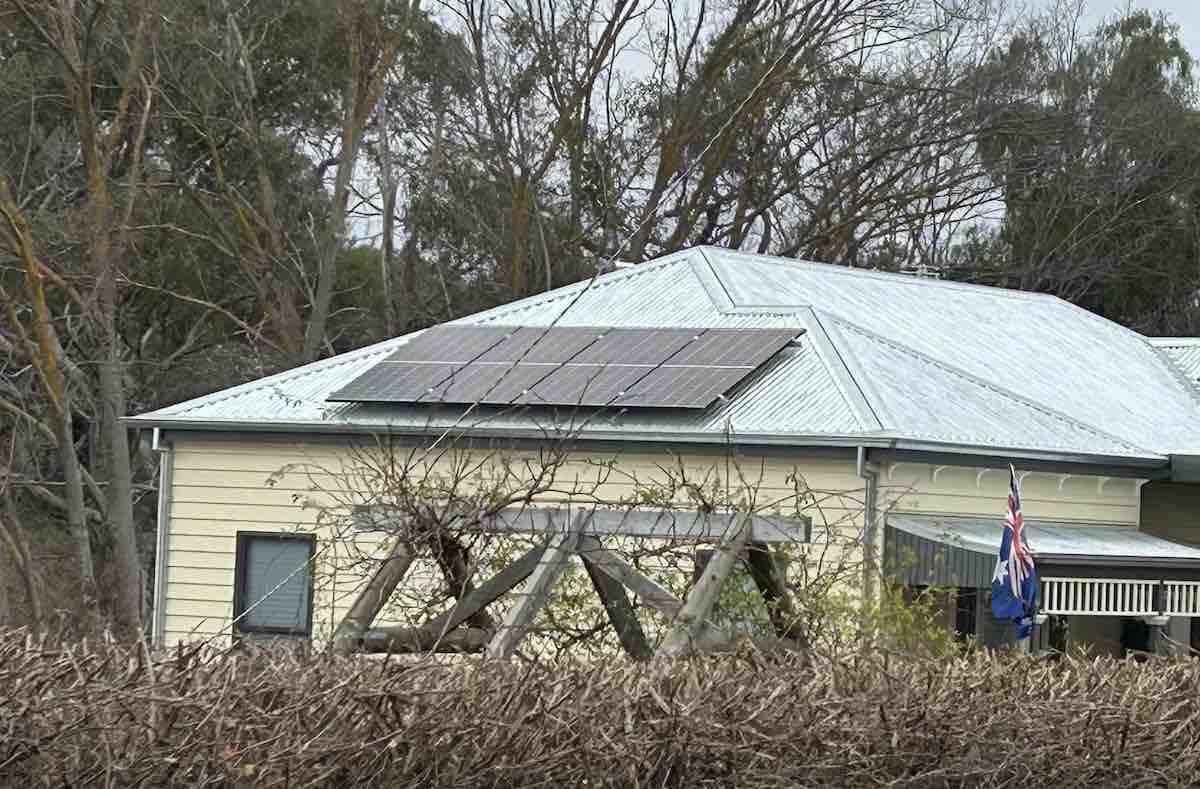A community battery with three hours of energy storage will be installed in the Victorian goldfields town of Maldon, to soak up the solar generated on the rooftops of the small regional town and share the benefits of cheap, clean locally generated power.
The 90kW/270kWh battery, a recipient of a $500,000 federal government grant, was formally announced on Tuesday by network company Powercor, which will build, own and operate the battery.
For Powercor – which along with Citipower and United Energy runs the electricity distribution grid for a large swathe of Victoria – the grid-side battery will be its first in a regional town.
As part of the DNSP’s Electric Avenue program, it is designed to help customers share cheap solar power in their communities. But the battery will also work to support more solar exports for the region, to boost the reliability of the local network, and to cut emissions.
On this particular part of the grid, supporting more rooftop solar is important – with solar panels already installed by around 37% of households in the town and surrounding Mount Alexander Shire, well above the network average of 25%.
Powercor says the battery will help enable an additional 112,000kWh of solar exports each year and help keep locally generated solar power local.
“It will allow more homes and businesses to connect and export excess solar from their systems back into the grid, where it can be stored and used at peak times when it’s needed most,” said Powercor’s general manager of electricity networks, Mark Clarke.
“The additional solar export capacity created by this battery can displace electricity from the wider grid and reduce carbon emissions by 90 tonnes each year.”
All told, batteries are proving an increasingly versatile too – and valuable asset – for distribution companies, able to perform a number of roles in a smarter and potentially cheaper way than methods that might otherwise be used.
“Traditionally, we would upgrade or replace power infrastructure to support higher growth, now we are also using batteries as another option to help to reduce costs for all customers,” says Clarke.
“In the future, we’re going to look at batteries on the network the same way we look at transformers and substations today – as another critical piece of electricity infrastructure that’s providing significant benefits to our customers,” he said.
A potential barrier to this future, however, is regulation. The rules around who should build, own and control grid-side batteries on distribution networks is still a work in progress.
Usually, Victoria’s monopoly network owners would need to seek special dispensation from energy market ring fencing rules to install energy storage systems on the grid, to prevent them from dominating the emerging market and potentially stifling innovation and competition.
This year, however, a temporary waiver to these rules has been put in place by the Australian Energy Regulator to distribution network service providers (DNSPs) access to the federal government’s $224 million funding initiative to install “shared” storage across the National Electricity Market.
According to Greg Hannan, the head of network strategy and non-network solutions at CitiPower, Powercor and United Energy, regardless of who owns them, grid-side batteries are rapidly becoming a fundamental part of the distribution network ecosystem.
“We’re actually required to procure least-cost network services,” Hannan told Australian Energy Week in Melbourne last week.
“So someone who’s got a battery that targets constraint, and you can deliver it to us and we can contract with you for that battery at the times when we need it … and that’s cheaper, that’s what we will do.
On the other hand, “if our business has the capacity to to deploy storage that can benefit customers, defer network augmentation and ultimately deliver lower network service costs for all customers … we just don’t want to be frozen out of that, basically,” he adds.
“Our business is not supporting … a monopoly distributor-led roll-out of batteries. What we’re saying is that, we know that these assets can do multiple things across different value streams.
“It’s almost the case where if someone can deploy storage and do it efficiently and you know, safely… well, then … the regulatory framework should support that.”
Regulations aside, Powercor says a growing number of communities are approaching the network company about the prospect of grid-side energy storage in their area.
Certainly, in Maldon, there has been strong support for the battery.
“I know how important a community battery for Maldon will be,” said local MP Lisa Chesters.
“It shores up the power supply in Maldon – we know lots of people have already connected to solar; it means that those households will be able to share their excess solar with others in the neighbourhood.
“It’s a real example of how our small towns can help power themselves.”
“I think it’s really significant for our town,” said local Amy Atkinson on Tuesday. “It helps us maintain the sustainability and the viability of a small community and it sets us on a path to a sustainable future – and I think we all want that.
“It’s [also] pretty important for our town to have equitable access to the renewables journey that we’re all on. And there’s obviously lots of cost savings if you can access renewable energy.
“So we want to make sure that all people across the whole town, low-income people, all households, can have access [to solar],” Atkinson said.










